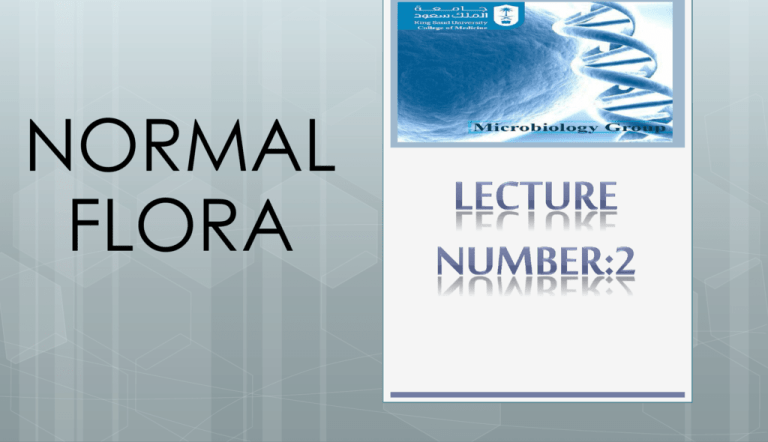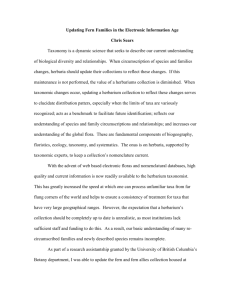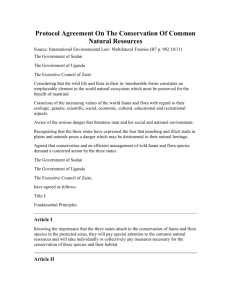2.Microbiology unit 2 (normal flora)
advertisement

NORMAL FLORA Lecture objectives : 1. Define the terms: Normal Flora, Resident flora, Transient flora and carrier state 2. Know the origin of normal flora. 3. Know the importance of normal flora with examples, including importance as: Source of opportunistic infection. Immunostimulation. Nutrition: Vitamins production. Production of Carcinogens. Protection against external invaders 1. Know areas of the body with normal flora (GIT, Urogenital tract, and skin) and most common types of organism in these areas and relation to pathogenicity of these organism. 2. Know sites of the body with no normal flora e.g. sterile body sites and the importance of this fact in relation to interpretation of culture results. Guide : green:example Red : important Grey : explanation Normal flora are microorganisms that are frequently found in a particular site in normal healthy individual and has Symbolic relationship with the host, they are mostly bacteria and it doesn't cause any illness • • • • Commensals: natural relationship with host. Residents : present for invariable period . Transients : establish itself briefly , excluded by host defence or competition from residents. Carrier state : potentially pathogenic , eg. S.pneumoniae, N. meningetidis in throat of healthy individual. Newborn sterile in uteroand. After birth, it will be exposed to many sources of normal flora Ex: mother’s genital tract and skin. 1 : •1- Immunostimulation (antibody development) •2- Exclusionary effect (vacuum effect ) and protection from external invaders.. •3-Production of essential nutrients (vit. K & B) by some normal intestinal flora eg. E.coli. : Source of opportunistic infections: Ex: Staphylococcus epidermidis Reaction with normal tissue components: Ex: the reaction between intestinal flora and the antigens of A&B blood substances. Production of carcinogens: Some normal flora may be modify through their enzymes chemicals in our diets. Ex: Artificial Sweeteners. 2 • • • • • Internal organs (except alimentary tract) are sterile at health. Sterility maintained by : - local defence mechanisms - chemical substances in serum & tissues eg. Complement , antibodies. -phagocytic activity of PMN GIT: mouth & large colon Urogenital tract: vagina & distal 1/3 of the urethra Skin Respiratory tract Genital tract External auditory meatus. Ex: Staphylococcus epidermidis, AFB (Acid Fast Bacilli) which Occasionally found in ear wax. 3 Respiratory tract flora: • Lower respiratory tract is STERILE. • Nose normal flora: Ex: Staphylococcus epidermidis, Staph. Aureus, Corynebacteria • Oropharynx flora: Ex: Veillonella, actinomyces, S.pyogenes ,N.meningitidis . Gastrointestinal tract flora: - Large intestine heavily colonized by bacteria. - Empty stomach sterile due to gastric acid. - Oesophagus flora as pharyngeal flora. - 1/3 of stool weight is anaerobes bacteria, mainly dead. 99% anaerobes 4 Genital tract flora: ˜ Female genital tract is heavily colonized by bacteria because of the vaginal secretion. ˜ Male & Female distal urethra is considered as skin so it has - S.epidermidis corynebacterium -Mycoplasma. ˜ Female vagina flora: Ex: Lactobacilli it is important to maintain the PH of the vagina. Skin flora: # Skin has rich resident bacterial flora(104/cm2). # Moist skin ,often colonized by coliforms. Ex:S.epidermidis,Corynebacteria,S. aureus N.B: SKIN FLORA is considered as potential pathogens MCQs : 1.Which type of normal flora is potentially pathogenic? a)Carrier state b) Residents c) Commensals d) Transient 2.Staphylococcus epidermidis are found in: a) Female Vulva b) Skin c) Upper respiratory tract d) all of the above 3………….. is a source of opportunistic infection. a) Antibodies b) Eschericia Coli c) Bacteroids Fragillis d) Corynebacteria 4.Internal organs except alimentary tract are sterile at health. a) T b)F 5)Normal flora originates from : a)Mothers genitals b) People handling the child c)Outside environment d)all of the above MCQ cont. 6)…………….. is important to maintain the PH of vagina. a) S.epidermidis b) E.coli c) Lactobacilli d) none of the above 7)The stomach is mostly sterile because of : a)Bile b)digestive enzymes c)antibodies d)high acidity 8)Which of these bacterium is found in the nasal cavity a) Corynebacteria b) S.faecalis c) lactobacilli d) Anaerobic cocci 9) DONE BY:






